A Tribute to Marlon Brando

As we’re launching, this year, our first collection of Aloha shirts, we want to give Men a voice in our journal section. Our attention has been caught by no less than one of the most iconic figure of Hollywood but before anything else this American « dreamer » who was called mad when he bought himself an island in the Pacific in order to build a village/school/resort structure. Marlon Brando is one the most charismatic and controversial persona of his time, not only he marked the American culture but he also left a profound imprint in the history of Tahiti. Upon his 99th birthday in early April, we pay tribute to his creative visions, determination and his mad love for Tahiti especially Teti’aroa.
« The happiest moments of my life have been in Tahiti. If I ‘ve ever come close to finding genuine peace, it was on my island among the Tahitians. When I first went there, I foolishly thought I’d use my money to help them; instead, I learned I had nothing to give them and they had everything to give me. » (p.322; Brando, songs my mother taught me, by Robert Lindsey.)
His passion for Tahiti started back in his teen years while he was reading the National Geographic that was featuring images of Polynesia. After that virtual encounter he continued to search about Tahiti in books and magazines.
It’s only in his 40ies that he was offered to play the role of Christian Fletcher in the movie Mutiny on the Bounty and given the opportunity to travel there.
When the actor set foot on Tahiti he admitted that the « reality surpassed even [his] fantasies ». The intense beauty of the place and the joyful Tahitians transported him into a whole new dimension and perspective of life.
Breaks in the filming were devoted to explore the island and experience the Tahitian way of life. Dancing « tamure » (Tahitian dance), singing in Tahitian and eating raw fish was his favorite hobbies so much so that the production team of MGM hired a local guy who ferried him back and forth between the main island and the replica of the H.M.S. Bounty, they meant to build for the movie. This guy’s name was Nick Rutgers, and he could track Marlon wherever he had wandered thanks to « radio cocotier » (local gossip) that worked almost better than the police.
During one of those rides, as they were passing by Teti’aroa, M.B. fell in love, when he landed on shore he reported he was « instantly enchanted ».
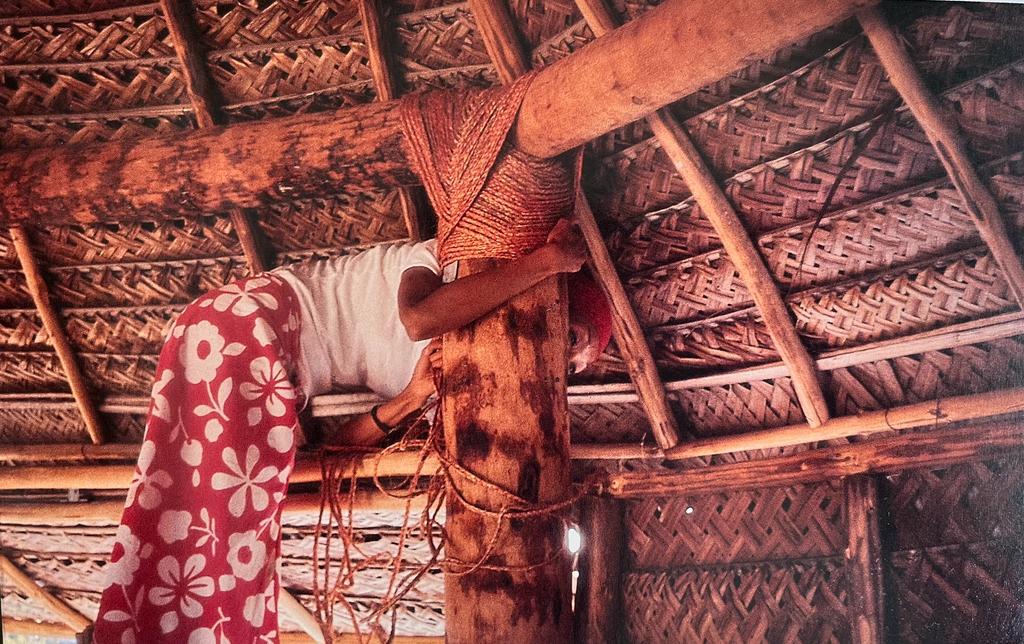
This coral island, he was able to sight from the top of a high mountain on Tahiti the first time, looked and commented « a slender pencil of land lying on the horizon about thirty miles away, and before long, it was exerting as mystical a pull on me as Tahiti itself. » (p.326; Brando, songs my mother taught me, by Robert Lindsey.) Needless to say that Teti’aroa cast a spell on him to the point of buying the island, eventually. He had difficulties to get permission from the government to acquire the atoll. He flew to Paris and out-passed the local politicians to seal the deal. In 1966 M.B. became the lawful owner of Teti’aroa.
Marlon found his paradise, amazement was audible when he described his first landing : « A dozen varieties of birds watched as we waded ashore; ahead of us, thick stands of coconut trees stood in the sand like brigades of sentries adorned with feathery crowns (…) The Lagoon was about five miles across at its broadest point and infused with more shades of blue than I thought possible: turquoise, deep blue, light blue, indigo blue, cobalt blue, royal blue, robin’s egg blue, aquamarine. (…) A shadow fell across the island briefly, then moved on, and the sun shone again like satin on the riotous colors of the lagoon. It was magical. » (p.327; Brando, songs my mother taught me, by Robert Lindsey.)
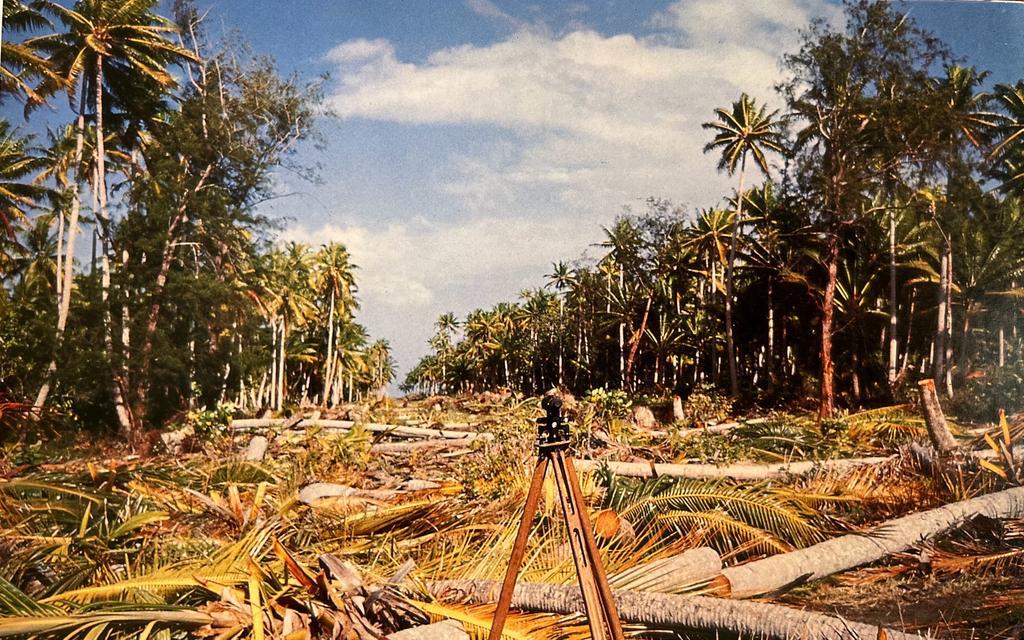
This mystical island came out as a true haven for our determined rebel. Retreats on an isolated island were well-deserved for someone who kept standing up against official institutions as well as the whole Hollywood industry along side minorities (American Indians and Afro-Americans). Giving his life a purpose and turning his dreams into reality were main headings of Marlon. And the use of his atoll became another challenge he took on as a responsibility.
« I’m the atoll’s guardian. I promised the former owners I would keep and preserve it for the Tahitians » (p.72, Waltzing with Brando, planning a paradise, By Bernard Judge)
M.B. and Bernard Judge found each other, the talented actor / big dreamer and a young and bold architect, together initiated what was to become an eco family hotel made out only of local material. They had managed to realize some parts of the initial plan they were proud of. Actually building a more or less strong structure on a remote atoll was already something but with the adamant rule of no disturbance in the natural and the cultural environment, we could call it a mammoth task. Construction team endured many ordeals to get their own persons over the reef, let’s imagine how they did to load the equipment and material over the reef and to the « motu » (islet).
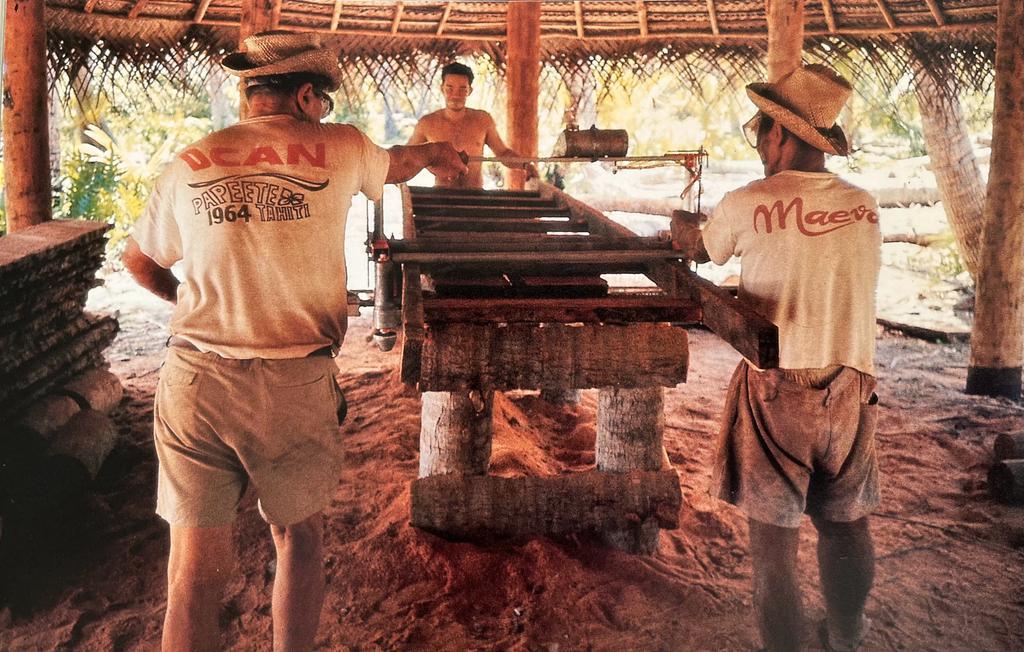
Teti’aroa was Marlon Brando’s muse, such that he was having crazier and crazier ideas like having electric eels powered up the hotel, elephant to do the heavy work or stocking the island with many different animals like raccoons, chimpanzees, cheetah, etc… I guess at that time they weren’t really aware about the risks of introducing non-native species into an environment. When he was tired of acting and living in a world of hypocrisy, his plan on Teti’aroa helped him hang on his goals. Acting was easy money and allowed him to finance his project on the atoll.
His use plan of the island seemed like he was to recreate an eden deprived from filthy pollution where humans, animals had found a well-balanced life system and eventually developed a self-sustaining community. He thought that Tahitians had everything to share to the world and this island could be a good model and showcase a simple, natural and harmonious way of living. They had managed to build several huts made out of cement in the foundations and wood from coconut trees, « kahaia » trees (zebra wood) mostly. But in 1983, a violent hurricane damaged the houses and they had to postpone the opening of the hotel.
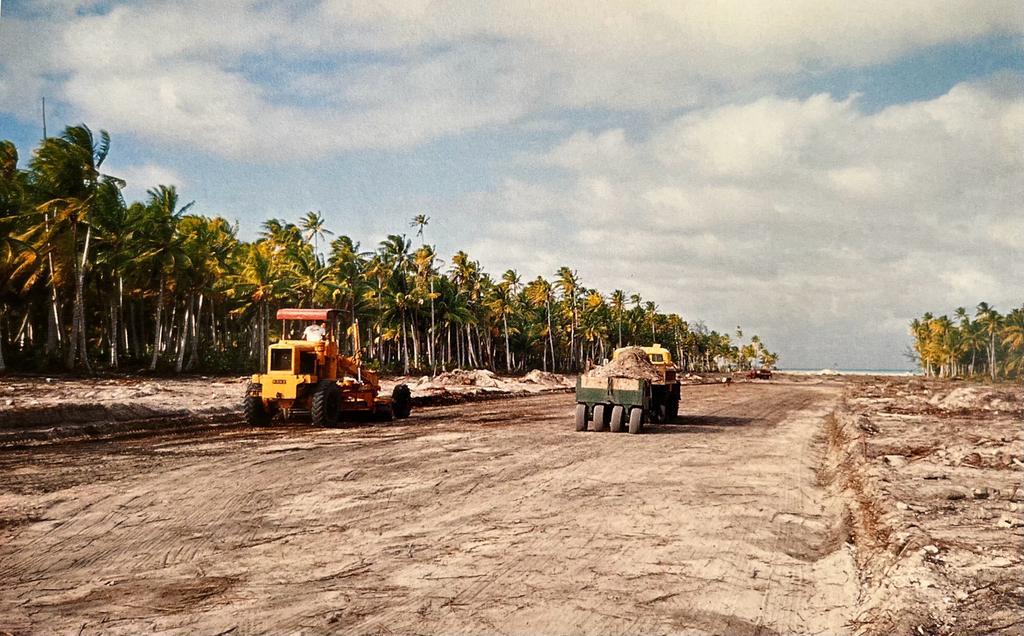
Obviously the development on the atoll wasn’t an easy task but his determination and love for Teti’aroa gave him the motivation. Yet in 1990 he went through the most painful period of his life and never seen his beloved island again. Tarita, the mother of his Tahitian children, and co-star in Mutiny on the Bounty, took over the management of the hotel. Ever since he lost his daughter, Cheyenne, his spark of life went down and he couldn’t materialize his dreams anymore.
When he passed away he was in discussion with Richard Bailey, CEO of Pacific Beachcomber, about some other version of Teti’aroa Hotel. A first-class resort which would be more profitable. As he had not been enough prolific in his last years, Marlon couldn’t inject money anymore in the project. The hotel closed in 2001 because, presumably, the airstrip didn’t respect the security criteria anymore. When he passed away in July, 2004, the heirs of Brando legacy and the Trust signed a deal to lease 2 islets out of 12.
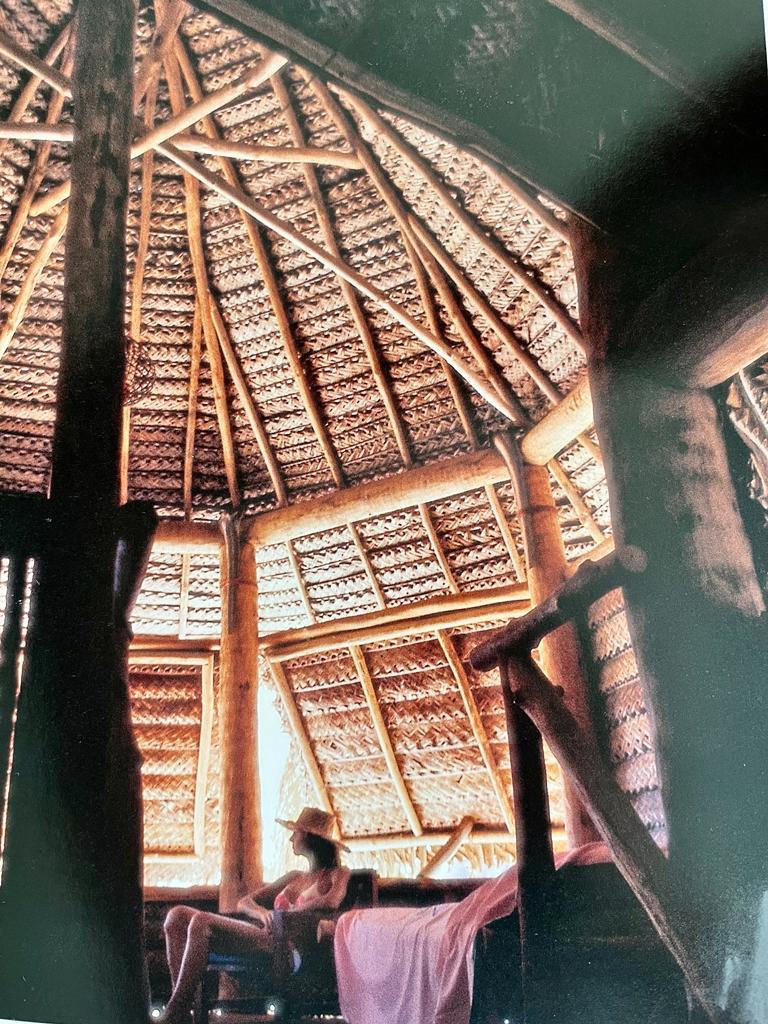
The 5-stars-eco-resort, the Brando, boasts the LEED (Leadership in Energy and Environmental Design) Platinum Certification, the U.S. Green Building Council’s highest accolade. They promise guests a neutral carbon experience. Green installations help maintaining the hotel in terms of electricity, waste management, water management and treatment, etc… Villas are placed in the vegetation to blend in and not to disturb the turtles when they come up the beach to lay eggs. Everything was thoroughly thought out to preserve to the maximum the natural setting. Tetiaroa Society took over the guardianship of the atoll as they manage cultural and scientific programs, but also biosecurity operations over the atoll. These are great achievements and the result is beautiful still we wonder if keeping it more wild and private without this human-made open wound pass/breakthrough the reef wouldn’t have been the best option for the preservation of Teti’aroa? Difficult and haunting question?
– ” Both versions of your initial plan have been explored now Marlon, are you happy with it?
– But where is the local village, where have the Tahitians been?
– Okay Marlon, but this means more construction, more destruction.
– Go ahead and ask her, ask Teti’aroa what SHE wants? “
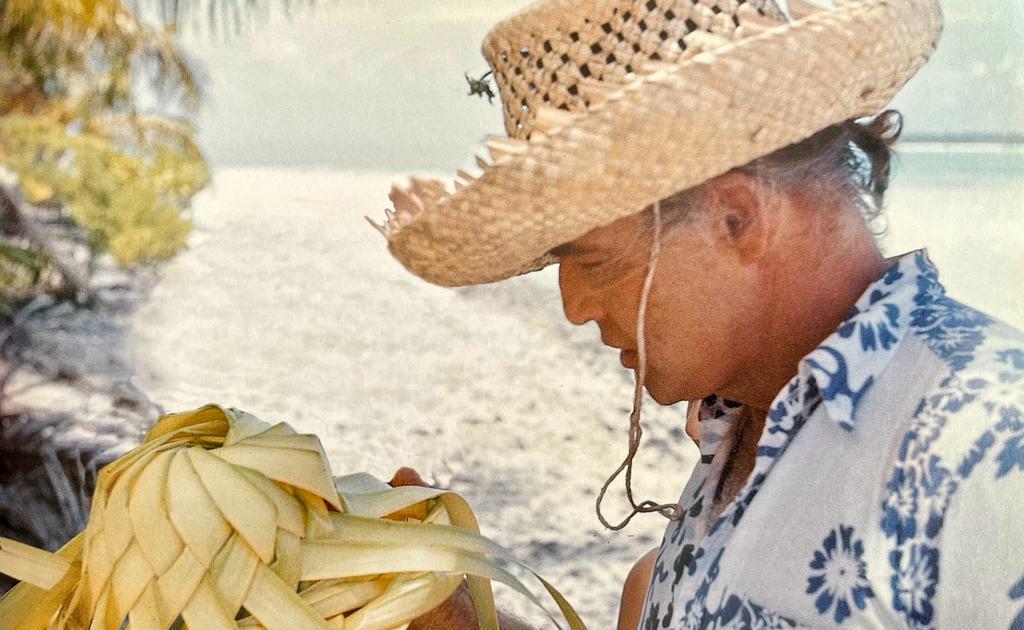
Photo credit: Bernard Judge
Bibliography:
BRANDO, Songs my mother taught me, Robert Lindsey.
Waltzing with Brando, Planning a paradise in Tahiti, by Bernard Judge.
Conversations with Brando, Lawrence Grobel.
